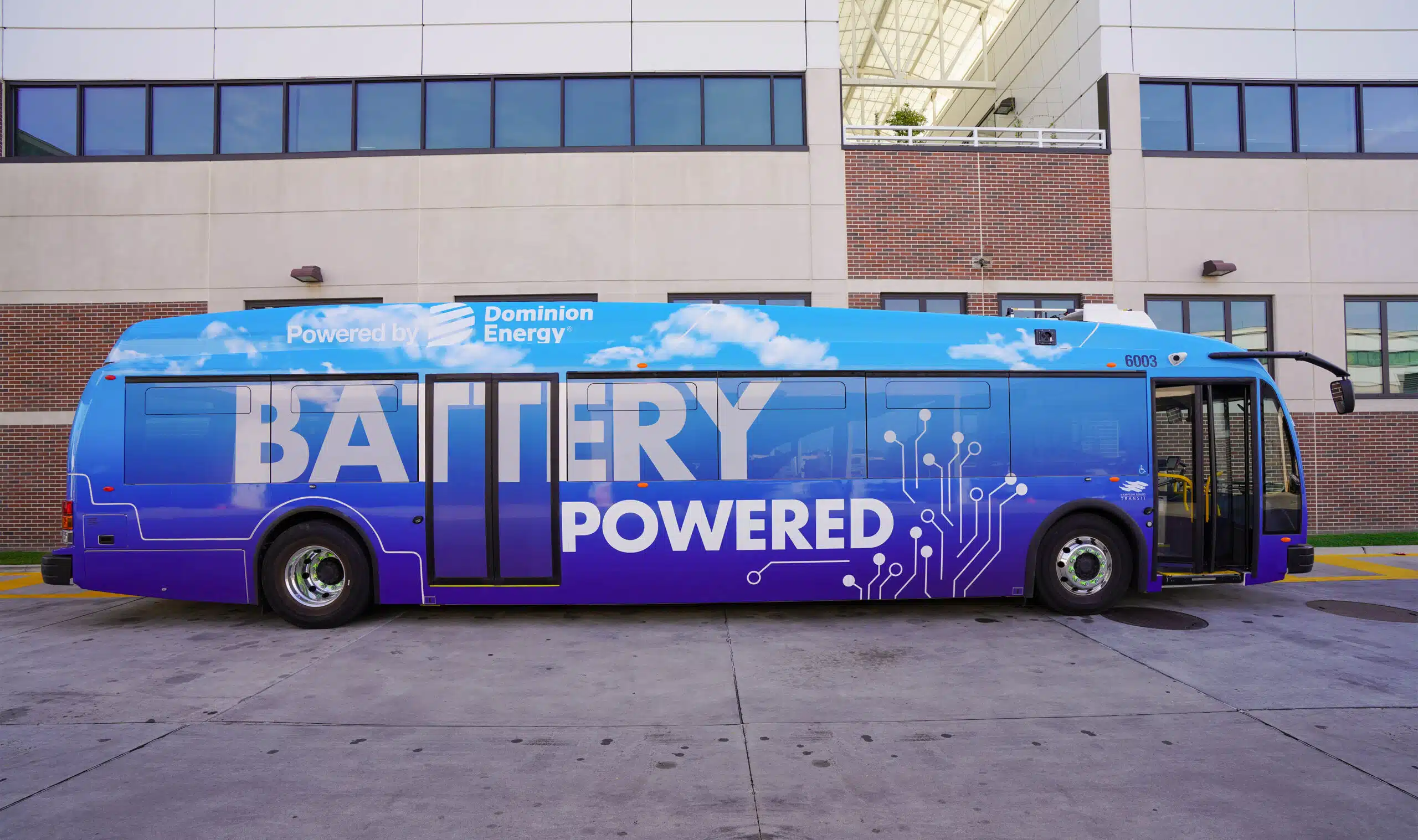- April 16, 2025
- Perspectives, Trending Topics
Best Practices for ZEV Fleet Transitions from the Virginia
DRPT Guidebook


John Jackson, AICP
Transit Planner
Kimley-Horn worked with the Virginia Department of Rail and Public Transportation (DRPT) to develop a resource guide for Virginia’s transit agencies wanting to transition their fleets to low- and zero-emission vehicles. This initiative was part of the Virginia Transit Equity and Modernization Study, which identified opportunities for expanded transit accessibility, infrastructure, technology, electrification, and more throughout the Commonwealth.
Modernizing Transit Fleets: A Guidebook to Low- and Zero-Emissions Transit Buses provides a template and technical guidance for fleet and facility transition planning. It also helps agencies utilize existing and new federal funding and addresses challenges in workforce recruitment, retention, and training. In providing this guide for Virginia DRPT, our team learned a host of valuable lessons when it comes to facilitating the transition from traditionally fueled buses to low- and zero-emission bus fleets.
Weighing the Costs and Benefits of Zero-Emission Bus Fleets
First and foremost, transit agencies should recognize the pros and cons of having a zero-emissions goal for their bus fleets. The infrastructure required to implement a low- or zero-emission bus fleet is expensive, and there are concerns about whether these technologies will perform effectively in certain climates. A lack of trust in the technology for battery electric buses and hydrogen-powered vehicles also proves to be a challenge.
Ultimately, this decision comes down to prioritization and understanding what is most important for your transit goals. Although the initial cost of transitioning to a low- or zero-emission bus fleet can be high, the long-term benefits outweigh the costs. With the bus fleet no longer relying on diesel or other fuels, maintenance requirements are significantly reduced and the longevity of the bus fleet is expected to increase.
The Overlooked Aspect: Preparing Your Workforce for Transition
In transitioning a bus fleet to low- or zero-emission alternatives, it can be easy to only focus on vehicle infrastructure, funding, or other elements and forget that well-trained staff are needed to operate a hybrid or electric bus. The needed training and real-world experience for these roles can be fostered through collaborative efforts between your agency and local community colleges and apprenticeship programs. For instance, DRPT partnered with Virginia Community College (VCC), creating a program that offers operating and maintenance courses on a rolling basis throughout the year. To be successful, training programs like this one should be consistently offered every year and accessible to all age groups and career phases.

Also, staff members should be trained in new technologies through partnerships with the Original Equipment Manufacturers (OEMs). Involving OEMs throughout the training process is crucial, especially in the initial years of transitioning a bus fleet. Maintaining a relationship allows you to call on them for troubleshooting and questions, ensuring a smooth transition and ongoing support.
Forming connections with various workforce development groups is also essential, as including the perspectives of union workers helps ensure proper representation of the future workforce. Labor representatives will play a crucial role in setting standards and requirements, helping make sure that the needs and expectations of your workforce are met. In our work with Virginia DRPT, connections with working groups that helped facilitate creating the resource guide included the VCC, American Transit Union Local, Virginia NAACP chapter, Northern Virginia Labor Federation, and the Baltimore-DC Building Trades Council.
Best Practices for Successful Fleet Transitions

Through creating the Virginia DRPT guidebook, our team identified fleet transition best practices that agencies can leverage in whatever order best fits their needs.
- Connect with other transit agencies that have made the transition to low- and zero-emission bus fleets. Fleet transitions are not a competition between agencies, and many agency initiatives, like the 100% hydrogen-fueled bus fleet at Champaign-Urbana Mass Transit District, can serve as a valuable resource.
- Start discussions about funding opportunities amongst city staff and leaders early in the process. Only some of the funding for a fleet transition will come from federal grants; much of it will be local. As such, you will need to become proficient at grant writing or partner with a grant-writing consultant.
- Try a pilot program if transitioning in increments is the best course for your agency. Piloting may be the best way to determine your fleet transition needs. It can help you explore the feasibility and viability of a bus fleet transition, whether it’s fully electric pilot, a fully hydrogen-fueled pilot, or a mixture of electric and hydrogen-fueled bus fleets.
- Coordinate with utility companies. Determining cost estimates and feasibility, bus routes, the best batteries and sizes, and more will put into perspective how much power your bus fleet will use.
- Read as many transition plans as you can. Read examples from all around the country in order to gain more perspective on how these documents are developed. Talk to transit agencies in your area or state that have completed transition plans about their process, resources, metrics, and funding sources. This will help paint a better picture of how to go about developing your plan from a local perspective.
- Utilize a route-planning tool. These external tools can plan future bus routes by considering factors such as land type, seasonal weather, charging systems, bus and battery sizes, and on-route charging availability.
- Implement vehicle utility saving practices like vehicle integration and vehicle to building integration. These practices limit demand charging so utility bills aren’t as high.
By keeping in mind these best practices and the importance of training, supporting, and developing a workforce for low- or zero-emission bus fleets, your agency can better facilitate the transition away from traditionally fueled buses and to a more sustainable future.
About the Expert

John Jackson, AICP
John is an accomplished program and project manager who is experienced in urban planning, transportation planning, public policy, clean transportation, and climate change policy in the public, private, and nonprofit sectors. John has worked on and/or managed a multitude of transportation projects, including the California Bus Stop Improvement Project, California Park and Ride Feasibility Study, Department of Energy EMPOWER Workplace Charging project, and the Sound Transit Graham Street-Boeing Access Road Station Infill Project. He is a certified planner by the American Institute of Certified Planners (AICP) and a member of the American Planning Association and the Coalition of Minority Transportation Officials.
